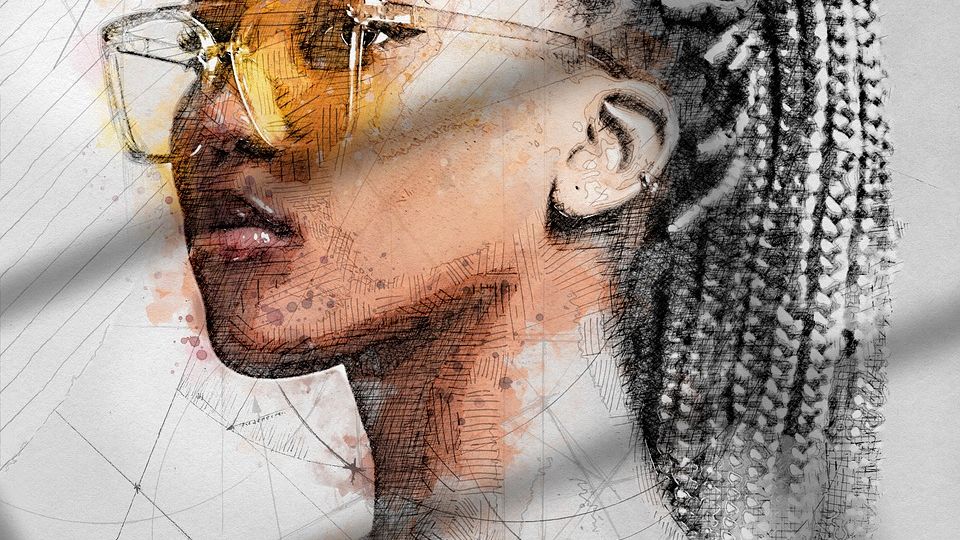
The U.S. sunglasses market was estimated at $41.8 Billion in 2022.
Sunglasses are special lenses or protective eyewear designed to protect the eyes from the sun’s glare and high-energy visible light. They sometimes function as a visual aid. Sunglasses feature colored, polarized or darkened lenses that protect the eyes from sunlight. Around 20% of cataracts cases are caused by UV exposure.
Despite the high popularity of contact lenses as an alternative to spectacles, eyeglasses market continues to hold its own partly due to the ease of use, improvement in technological and aesthetic qualities of eyeglass lenses and frames.
The rise of consumer preference for well-designed and quality products to elevate their outfit and style, has boosted the demand for sunglasses. Sunglasses bring instant symmetry to customers’ faces which increases the perception of their natural beauty.
Consumers in North America show a high affinity for premium, fashionable and branded eyeglass frames and sunglasses fitted with lenses with UV-filter, anti-glare, and scratch-proof coatings.
In the United States, nonprescription sunglasses are regulated as medical devices by the Center for Devices and Radiological Health (CDRH) in the Food and Drug Administration (FDA).
Because 300 million sunglasses are distributed in the U.S. every year, they are one of the most widely available over-the-counter ophthalmic devices regulated by FDA.
Nonprescription sunglasses are classified and regulated by FDA as class I devices. Nonprescription devices are commonly sold or distributed as “over-the-counter” (OTC) devices.
These sunglasses are ophthalmic medical devices consisting of spectacle frames and spectacle lenses or clips (clip-ons) intended for use in the attenuation of sunlight but not intended to provide refractive corrections.
Nonprescription sunglasses are:
▪ Devices that consist of spectacle frames or clips (clip-ons) with absorbing, reflective, tinted, polarizing or photosensitizing lenses intended to be worn by a person to protect the eyes from bright sunlight but not to provide refractive corrections.
▪ Classified as Class I medical devices (product code HQY) and regulated under the general controls provisions.
▪ Exempt from the requirement of Premarket Notification 510(k).
Sunglasses that do not meet the criteria for compliance with the limitations of exemptions must submit a Premarket Notification 510(k) and receive a determination of substantial equivalence from FDA before marketing the device.
Although these devices are Premarket Notification 510(k) exempt, several other FDA regulations apply:
▪ U.S. manufacturers and initial U.S. distributors (importer) must register their establishment with FDA.
▪ Foreign manufacturers must register their establishment with FDA and name a United States Agent.
▪ Manufacturers must list their devices with FDA.
▪ Manufacturers must meet Quality System (QS) requirements.
▪ The lens for spectacles and/or sunglasses must be certified as impact resistant.
Failure to comply with these requirements may result in detention of the device by the FDA and U.S. Customs.

Manufacturers of magnifying spectacles, spectacle frames, prescription spectacle lenses and sunglasses must list each of the devices manufactured by the firm.
The following regulation numbers and product codes are provided for your convenience.

Companies should assess the following physical, chemical, optical and toxicological properties of the major components (spectacle frames and/or spectacle lenses) used in the manufacturing of the finished device:
▪ Impact Resistance.
▪ Flammability.
▪ Biocompatibility.
▪ Optical Properties.
Conformance with the requirements of the following voluntary national or international standards, is considered acceptable for good manufacturing practices and appropriate for use in evaluating the critical design characteristics and properties listed above:
1. American National Standards Institute (ANSI)
2. International Organization of Standards (ISO)
Impact Resistance: ANSI Z80.3-1996, Nonprescription Sunglasses and Fashion Eyewear – Requirements, Section 5.1- Impact Resistance Test.
Flammability: ANSI Z80.3-1996, Nonprescription Sunglasses and Fashion Eyewear – Requirements Section 5.3 – Flammability Test.
Biocompatibility: ISO 10993, Biological Evaluation of Medical Devices – Parts 1-12.
Optical Properties:
1. ISO 14889, Ophthalmic Optics – Fundamental Requirements for Uncut Spectacle Lenses, Section 4.5.
2. ISO 8980 – 3, Ophthalmic Optics -Uncut Finished Spectacle Lenses – Part 3, Transmittance Specifications and Test Methods.
3. ANSI Z80.3 – 1996, Nonprescription Sunglasses and Fashion Eyewear – Requirements, Sections 4.4 through 4.8
Manufacturers may conduct drop ball tests, as described in 801.410(d)(2), or use an equal or superior test method.
Acceptable sampling methods include:
▪ ANSI/ASQC Z1.4/1993, Sampling Procedures and Tables for Inspection by Attributes.
▪ ISO 2859-1/1999, Sampling Procedures for Inspection by Attributes — Part 1: Sampling Schemes Indexed by Acceptance Quality Limit (AQL) for Lot-by-Lot Inspection.
▪ MIL-STD 105, meeting an Acceptable Quality Level of 6.5, General inspection level II.
Certification Statement of Impact Resistance
A certificate illustrating the lens’ compliance with the 21 CFR 801.410 should accompany each lot of spectacle lenses/sunglasses seeking entry into the U.S. The certificate should reflect that the eyewear have been “sampled” and are impact resistant, using a statistically significant method.
“__________________________________” (Name of manufacturer or seller) hereby guarantees that the articles listed herein are impact-resistant within the meaning of 21 CFR 801.410 and have been tested pursuant to that section. Impact-resistant lenses are not unbreakable or shatterproof. Records of testing will be maintained for a period of three (3) years from the date of shipment, and copies will be forwarded to FDA upon request.
(Signature and street address of manufacturer or seller)


